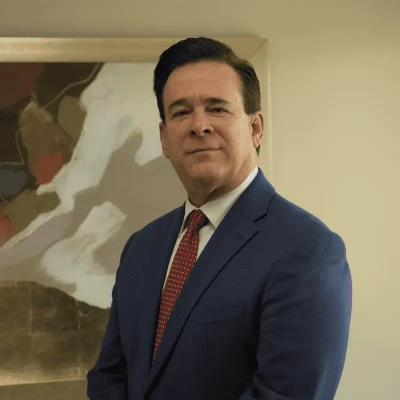Creating a Culturally Sensitive Workplace: Approaches to Mental Health
Mental health approaches in the workplace must be informed by cultural sensitivity, as highlighted by experts across multiple disciplines. Effective strategies include employee-driven wellness programs that honor cultural identities, creating neutral spaces that respect diverse wellness approaches, and implementing no-questions-asked wellness time. This comprehensive framework transforms team dynamics while building workplace trust through culturally responsive programs that acknowledge the unique needs of a diverse workforce.
- Body-Based Practices Transcend Cultural Mental Health Stigma
- Culturally Responsive Programs Build Workplace Trust
- Flexible Support Spaces Adapt to Cultural Backgrounds
- Employee-Driven Wellness Programs Honor Cultural Identity
- No-Questions-Asked Wellness Time Respects Cultural Differences
- Cultural Context Shapes Mental Health Communication
- Neutral Spaces Respect Different Wellness Approaches
- Cultural Calendar Integration Boosts Team Performance
- Inclusive Policy Development Amplifies Cultural Perspectives
- Leaders Model Openness to Overcome Cultural Taboos
- Trust and Autonomy Replace Rigid Wellness Policies
- Diverse Options Enable Personalized Mental Health Support
- Simple Human Connection Transforms Team Dynamics
Body-Based Practices Transcend Cultural Mental Health Stigma
In our organization, we recognize that cultural perspectives on mental health vary significantly. Some cultures approach mental health discussions openly, while others attach stigma to conversations about stress or burnout. To accommodate these differences, we’ve implemented body-based practices focused on nervous system regulation that intentionally avoid labels like “therapy” or “mental health.” This approach creates a space where employees from all backgrounds can participate without feeling judged or stigmatized.
The benefits of this inclusive approach are substantial. We see higher participation rates across our diverse workforce, employees retain and apply these tools more effectively, and we’ve developed a stronger sense of shared resilience throughout the organization. By respecting cultural differences in how mental health is understood, we’ve created pathways for everyone to access support in ways that feel comfortable and meaningful to them.

Culturally Responsive Programs Build Workplace Trust
Some organizations recognize and accommodate different cultural perspectives on mental health by offering culturally responsive Employee Assistance Programs (EAPs). This can look like group support circles for employees from collectivist cultures, access to traditional healers or culturally specific therapists, and flexible policies for practices tied to cultural or religious traditions such as meditation retreats, fasting, or other ceremonies. It’s important to also encourage open discussions that normalize cultural differences, and to understand that mental health challenges may be expressed in physical terms like fatigue or headaches in some cultures. This inclusivity benefits a diverse workforce by fostering a stronger sense of belonging and trust. Reducing stigma, increasing access to care, improving collaboration through authentic perspectives, and enhancing employee engagement can make individuals from all cultures feel valued and supported.

Flexible Support Spaces Adapt to Cultural Backgrounds
At Legacy Online School, we interact with both staff and students from over 30 countries, which allows for an insightful perspective of how culture informs discussion around mental health. For example, in certain cultures it is common to be explicitly invited to talk about stress, whereas in others it is a more private topic, or perhaps even taboo. The purpose is not to apply an approach uniformly, but rather to create flexible spaces in which original participants have the opportunity to share ways in which their respective communities understand resilience, shame, or well-being. This facilitation is very much a part of our support team’s training, along with asking the simple question of “what feels normal given your background” and being adaptive (e.g., video calls, text-based check-ins, reflection tools, journaling, etc.).
We learn from those who have pre-existing or enhanced lived experience employing these acts of supportive connection. We also offer small peer groups; a more informal way to connect with other people with a similar cultural lens. The results can be measured; over the past year we have seen a 20% increase in early requests for support, as well as a 15% increase in staff retention. When people feel seen for who they are, they are willing to trust sooner, stay engaged longer, and most importantly they present a wider range of ideas when it comes to defining what well-being is or could be; all of which adds richness to our culture, and aids in our growth.

Employee-Driven Wellness Programs Honor Cultural Identity
When building wellness programs, we initially overlooked cultural differences and faced disengagement from certain groups. Employees quietly avoided resources because they felt culturally irrelevant or even intimidating. We pivoted by co-creating wellness offerings with employee input, emphasizing cultural resonance above uniformity. This collaborative approach allowed employees to shape mental health strategies that honored personal identities. Inclusivity, therefore, was not leadership-led but employee-driven, which increased authenticity considerably.
The inclusivity benefited the workforce by empowering individuals to participate authentically, without suppressing cultural values. Engagement rose because people finally trusted wellness was designed with them, not imposed upon them. Collaboration improved across cultural lines, as wellness became a shared, celebrated dimension of identity. The result was a workforce more resilient, creative, and unified than before. Inclusivity around mental health transformed workplace culture into a living reflection of collective respect.
No-Questions-Asked Wellness Time Respects Cultural Differences
At our Miami law firm, we work with a diverse team representing many cultural backgrounds, each with its own perspective on mental health. One example of how we recognize and accommodate these differences is by offering flexible mental health support options instead of assuming one size fits all. Some team members prefer formal therapy sessions, while others find more comfort in wellness activities like mindfulness, faith-based practices, or simply having time for quiet reflection.
We created a system where employees can take mental wellness days without needing to explain or justify them. We also provide a list of culturally diverse mental health resources, including bilingual counselors and support groups. When someone needs time or space to care for their well-being, we do not question it. We trust their process and offer support in ways that match their values.
This kind of inclusivity builds deeper trust across the team. It sends a message that people are not expected to leave parts of themselves at the door to be professional. When employees feel seen and respected in how they approach mental health, they show up more engaged, more present, and more committed. Inclusion is not just the right thing to do—it strengthens the entire workplace.
Cultural Context Shapes Mental Health Communication
One of the most eye-opening lessons I’ve learned as a founder is how differently people around the world talk about, and even define, mental health. At Nerdigital, our team is spread across several countries, and I quickly realized early on that if we treated mental health support as a “one-size-fits-all” policy, we would miss the mark entirely.
I remember a situation with a team member in Eastern Europe who was hesitant to bring up burnout directly. Instead of using the word “stress” or “mental health,” she talked about “not being at her best” and needing more time to reset. It contrasted sharply with a colleague in North America who openly spoke about therapy appointments and needing flexible scheduling for them. That moment made me pause—same underlying need, but two completely different ways of expressing it.
From that experience, we shifted our approach. Instead of setting rigid policies, we started with conversations. We introduced flexible hours, optional mental health days, and even anonymous check-ins where people could share how they were doing without worrying about stigma. For some, it meant having space during religious holidays to disconnect fully; for others, it was the reassurance that taking a mental health break wasn’t going to be judged.
This inclusivity has been more than just a moral choice—it’s been a business advantage. When people feel safe to express their needs in their own cultural context, they perform better and collaborate more openly. I’ve noticed teams are quicker to step in and support one another because they understand that everyone has different ways of coping and communicating.
For me, the biggest takeaway has been that inclusivity around mental health isn’t about creating the perfect program—it’s about building a culture where people don’t have to translate their struggles into a “company-approved” language. They can be themselves, and that authenticity strengthens both trust and productivity.

Neutral Spaces Respect Different Wellness Approaches
A unique example I’ve seen was when our company added “quiet recharge rooms” in the office, but intentionally framed them in a way that respected different cultural approaches to stress. For some, it was a space for mindfulness or meditation. For others, it was simply a quiet spot to step away without feeling like they had to explain why. I remember a colleague from a culture where therapy wasn’t commonly discussed telling me they felt comfortable using the room because it wasn’t labeled “mental health”—it was framed more broadly as a place for focus and balance. That flexibility gave people the freedom to use it in a way that aligned with their own background and comfort level.
The impact was noticeable. People came back from those breaks sharper, more patient, and less burned out. It also sparked conversations among coworkers about different ways of managing stress, which built understanding across cultures. By accommodating those perspectives without forcing everyone into a single definition of “mental health support,” we created a healthier, more respectful workplace. In my view, that inclusivity paid off in stronger collaboration and a team that trusted each other more.
Cultural Calendar Integration Boosts Team Performance
At first glance, SEO and mental health might seem worlds apart, but both rely on understanding context. In our fully remote, globally distributed team, we learned that mental health support must reflect cultural nuance, not just corporate policy. For instance, one of our top-performing campaigns, which took an eCommerce client from zero to $20K monthly revenue, was led by a team spanning five countries. We realized quickly that motivation and burnout looked different across cultures, some valued time off for family events, while others needed quiet work periods for mental recharge. So, we built flexible sprint cycles around cultural calendars rather than forcing uniform schedules.
The result wasn’t just happier employees, it was sharper execution. That campaign finished 30% faster and delivered 25% more outreach responses than average. By respecting cultural differences in how people process stress, we didn’t just protect mental health, we boosted performance. For us, inclusivity isn’t a checkbox; it’s a growth strategy that keeps creativity alive across time zones and temperaments.
Inclusive Policy Development Amplifies Cultural Perspectives
In my workplace, when a policy is being developed, people from other countries are asked to share how mental health is perceived in their culture, before a policy is developed. During a conversation with a colleague I learned that in her country of origin, stress is resolved within the context of open family communication instead of individual counseling. Instead of having to follow one program, we offered employees a choice – either confidential one-on-one counseling or guided family sessions. That change made sure that no one was forced into a model that went against their value system.
The outcome has been clear. Within three months, wellness activity participation increased by almost 40 percent and cross-department communication increased. Cultural sensitivity fosters trust, reduces stigma, and creates a healthier work environment in the long run.

Leaders Model Openness to Overcome Cultural Taboos
In our workplace, inclusivity began with recognizing cultural taboos around mental health discussions. Some employees feared disclosure would harm reputations within their communities. To address this, we normalized discussions by having leaders share personal experiences publicly. That openness reframed wellness conversations from weakness into examples of courageous, responsible leadership. Employees across cultures responded positively, trusting the workplace valued honesty without cultural penalty.
This inclusivity produced measurable benefits in psychological safety across departments. More employees reported feeling comfortable voicing concerns before burnout escalated into crises. Preventive conversations saved productivity while reducing turnover from unspoken stress and disengagement. Inclusivity, therefore, benefited both individual health and organizational stability simultaneously. It proved that culture-driven openness around wellness creates resilience that standard benefits packages cannot match.

Trust and Autonomy Replace Rigid Wellness Policies
I believe the most effective way to accommodate different cultural perspectives on mental health is to stop creating a specific policy for every possible need. Instead, we build our workplace around principles of high trust and autonomy. We focus on outcomes, not hours logged, and provide flexible resources like unlimited paid time off. This allows team members to take the time they need for family, religious observances, or personal well-being without having to explain or justify it through a narrow corporate lens.
This benefits everyone because it puts the individual in control. One person might need a day to support an elder, a core cultural expectation for them, while another may need a quiet day for mental rest. Both are valid and supported without a complex system of approvals. When you trust your team to manage their energy and deliver results, you create an inclusive environment where people feel respected as whole individuals, which leads to higher ownership and better work.

Diverse Options Enable Personalized Mental Health Support
In our healthcare company, we always make it a priority to recognize that mental health is viewed differently across cultures. We’ve learned that mental health issues are not all the same, so instead of focusing on a single wellness program, we offer a variety of options like confidential counseling, cultural sensitivity training, and peer support groups. This gives our employees the freedom to choose what feels most comfortable and relevant to them.
It’s very important to me to create an environment where people are not afraid to talk about mental health and to build trust and understanding among the whole team. Our employees have diverse backgrounds, so I want to support them by making them feel seen and heard. I believe that if they’re more engaged, they bring their best selves to work all the time. Doing this benefits both our culture and the quality of care we can provide.
Simple Human Connection Transforms Team Dynamics
It’s so important that a team feels they can rely on each other, especially when they are going through a tough time. My approach to “mental health” is a simple one. The “radical approach” was a simple, human one.
The process I had to completely reimagine was how I looked at my crew. For a long time, I was just focused on the work. But a tired mind isn’t focused on the bigger picture. I realized that a good tradesman solves a problem and makes a business run smoother. I knew I had to change things completely. I had to shift my approach from just being a boss to also being a leader.
The most valuable lesson I learned was to just talk to my guys. The “accommodations” are simple, human ones. I had a guy on my crew who was having a tough time. His initial reaction was to just work harder, but I realized that was a mistake. I had to force myself to talk to him. I learned that you have to address a problem head-on, not run from it. The “accommodation” was just me giving him a day off.
The impact has been on my company’s reputation and my own pride in my work. By being a leader who stands by his crew, I’ve built a team that I can trust. This has led to better work, fewer mistakes, and a stronger reputation. A client who sees that I hire good people is more likely to trust me, and that’s the most valuable thing you can have in this business.
My advice for others is to just keep it simple. You can’t just tell people what to do. You have to show them that you care. That’s the most effective way to “accommodate for mental health” and build a business that will last.






